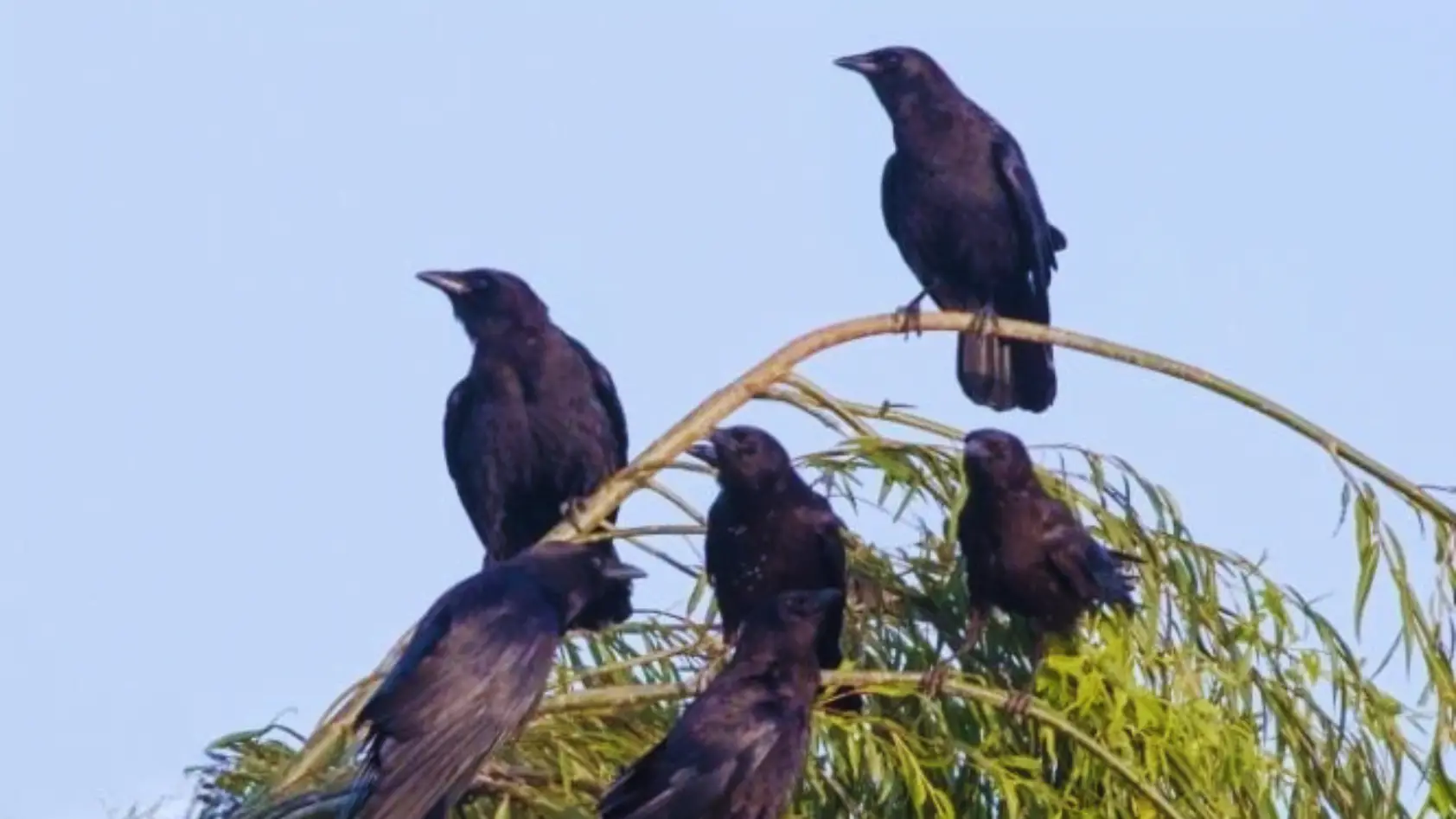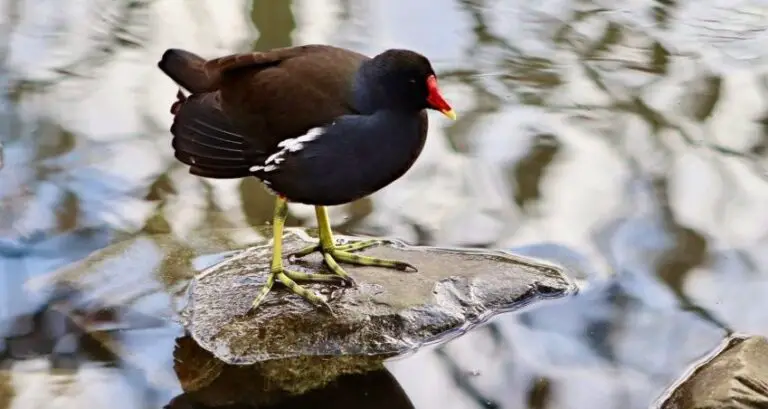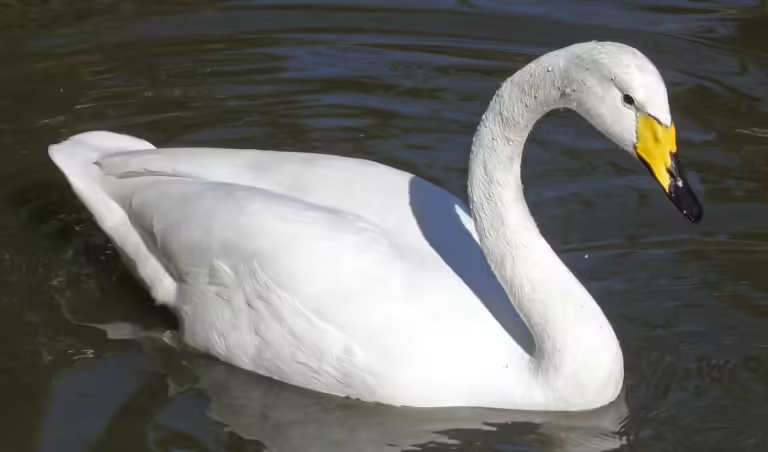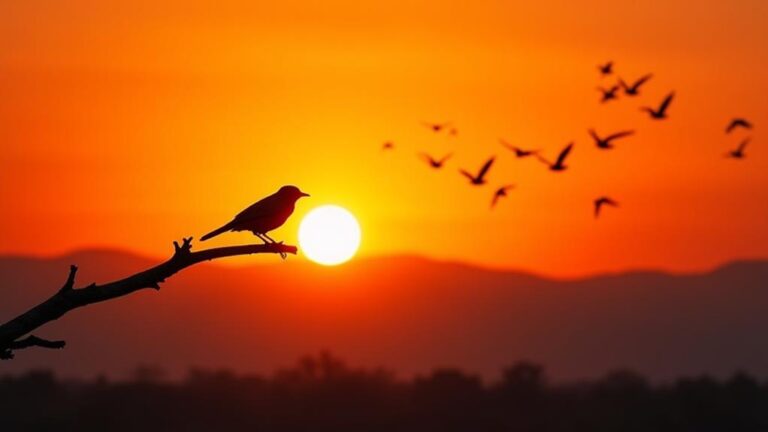Do you ever wonder why do crows gather? It’s a fascinating behavior that has intrigued scientists and bird enthusiasts for years. In this article, we will unravel the mysteries behind crow congregations and delve into the social behavior of these intelligent birds.
From the reasons behind their gatherings to the environmental factors that influence them, we will explore it all.
But it doesn’t stop there – we will also discuss the cultural significance of crow congregations and their adaptability to urban environments.
As we look towards the future, we will touch upon the potential directions for crow research. So, get ready to appreciate and coexist with these remarkable creatures as we embark on a journey to understand why crows gather.
It’s time to unlock the secrets of this captivating behavior together.
Key Takeaways
- Crow congregations serve various purposes, including safety in numbers, socialization, information sharing, and finding mates.
- Communication and hierarchy play important roles within crow congregations, with complex language, vocalizations, and specific roles for dominant pairs.
- Crow congregations provide safety and protection against predators and threats through collective defense systems and roosting together.
- Resource sharing is a key aspect of crow congregations, involving sharing information about food sources and potential threats, defending territory, and facilitating learning among young crows.
The Nature of Crow Congregations
Ever wonder why crows gather? Let’s unravel the intriguing behavior of these clever birds. The nature of crow congregations is a fascinating subject.
Picture this: you’re walking down the street, and suddenly, you notice a large group of crows gathered in a nearby tree. It’s a sight to behold, isn’t it? But why do they do it?
One reason for crow congregations is safety in numbers. Crows are highly intelligent creatures, and they know that there’s strength in unity. By gathering together, they can watch out for predators and alert each other to potential dangers. It’s like having a neighborhood watch program, but for birds!
Another reason for crow congregations is socializing. Crows are incredibly social animals, and they enjoy spending time with their fellow crows. Just like humans, they have their own social hierarchies and relationships. Gathering in large groups allows them to interact, communicate, and bond with one another. It’s their version of a crow party!
Lastly, crow congregations also serve as a way to find food. Crows are opportunistic feeders and are always on the lookout for a tasty meal. By gathering together, they can share information about food sources and increase their chances of finding a good meal. It’s like a group of friends sharing restaurant recommendations!
In conclusion, Crow congregations serve multiple purposes. They provide safety, socialization, and increased chances of finding food. So, the next time you see a group of crows gathered together, take a moment to appreciate the fascinating behavior of these clever birds.
Social Behavior of Crows
When you observe a group of crows interacting, it’s like watching a tightly knit community, where each member has its own role and purpose, just like the gears of a well-oiled machine. Crows are highly social birds, and their social behavior is fascinating to witness. They form strong bonds with family members and engage in cooperative activities like hunting and raising their young.
One key aspect of crow social behavior is their ability to communicate with each other. Crows have a complex language consisting of a variety of calls and vocalizations. They use these calls to communicate information about food sources, predators, and even individual crows within their group. This communication is crucial for maintaining the cohesion and coordination of the crow community.
Crows also exhibit a hierarchical structure within their groups. There is usually a dominant pair that leads the group and makes important decisions. Other crows within the group have specific roles, such as sentinels who keep watch for predators, foragers who search for food, and caregivers who assist in raising the young.
Overall, the social behavior of crows is a testament to their intelligence and adaptability. They have developed a sophisticated system of communication and cooperation that allows them to thrive in various environments. So the next time you see a group of crows gathering, take a moment to appreciate the intricate social dynamics at play.
Reasons for Crow Gatherings

When crows gather, there are several reasons behind their behavior.
One of the main reasons is safety and protection. By gathering in large groups, crows can better defend themselves against predators and other threats.
Another reason for Crow congregations is the sharing of information and resources. Crows are highly intelligent birds, and by gathering together, they can exchange valuable information about food sources and potential dangers.
Lastly, crow gatherings also serve as a platform for mating and courtship displays. These gatherings provide an opportunity for crows to find a mate and showcase their reproductive abilities.
Safety and Protection
To truly understand the behavior of crow congregations, you need to grasp the importance of safety and protection. Crows gather in large numbers as a means of safeguarding themselves against predators and potential threats. By clustering together, they create a powerful defense system. When one crow spots danger, it emits a loud caw, alerting the others to the potential danger. This collective response allows them to fend off predators more effectively. Crows also congregate in sizable groups to roost over night, providing them with safety in numbers and lowering the likelihood that predators will target particular birds. This behavior is fascinating to observe, as it showcases the intelligence and social nature of these remarkable birds.
To illustrate the importance of safety and protection in crow congregations, here is a table that compares the advantages of gathering versus being alone:
| Advantages of Gathering | Advantages of Being Alone |
|---|---|
| Safety in numbers | Increased independence |
| Enhanced defense system | Greater freedom of movement |
| Early warning system | No competition for resources |
As you can see, gathering provides crows with numerous benefits in terms of safety and protection, making it a crucial aspect of their behavior.
Sharing Information and Resources
In Crow communities, they come together to share information and resources, creating a network of support and cooperation. It’s fascinating to observe how crows gather in large numbers, not only for safety reasons but also to exchange valuable knowledge.
Here are three ways in which crows benefit from sharing information and resources:
- Food: Crows have a remarkable ability to locate food sources. When one crow finds a tasty morsel, it quickly spreads the word among the group, leading to a collective feast. This sharing behavior ensures that all members have access to essential nourishment.
- Territory: By sharing information about potential threats and opportunities, crows can effectively defend their territory. They communicate through intricate calls and body language, helping the entire community stay informed and protected.
- Learning: Young crows benefit greatly from the wisdom of their elders. By observing and interacting with older crows, they acquire essential skills and knowledge about survival strategies, foraging techniques, and even social dynamics within the community.
In crow congregations, the act of sharing information and resources strengthens the bonds between individuals and contributes to the collective success of the community.
Mating and Courtship Displays
Imagine yourself as a curious observer, drawn into the mesmerizing dance of crows as they weave a tapestry of love and desire, their courtship displays a breathtaking display of devotion and beauty. Mating and courtship among crows are not only essential for reproduction but also serve as a means of strengthening pair bonds. These intelligent birds engage in a variety of intricate behaviors to attract a mate, including vocalizations, elaborate flight patterns, and gift-giving.
To give you a glimpse into the fascinating world of crow courtship, let’s explore a 3×3 table that highlights some of their remarkable displays:
| Courtship Display | Description | Purpose |
|---|---|---|
| Vocal Duet | Male and female crows engage in synchronized calling | Demonstrates compatibility and strengthens bonds |
| Wing-Fluttering | Males flutter their wings to showcase their agility | Displays physical prowess and attractiveness |
| Gift-Giving | Male crows present females with tokens of affection | Demonstrates generosity and willingness to provide |
As you can see, these courtship displays are not only visually stunning but also serve as important communication tools for crows in their quest for love.
The Role of Intelligence in Crow Congregations
The role of intelligence in crow congregations cannot be underestimated. These gatherings are not random and aimless; they have a purpose that requires the crows to be smart and adaptable. Crows are highly intelligent birds, known for their problem-solving skills and ability to use tools. Their intelligence plays a crucial role in their ability to gather in large numbers.
One reason why crows gather is for information sharing. They communicate and learn from each other, passing on knowledge about food sources, predators, and other important information. By gathering in large groups, crows can access a wider range of knowledge and increase their chances of survival.
Another important role of intelligence in crow congregations is social learning. Crows learn from watching and imitating others. When they gather in groups, they have the opportunity to observe and learn from each other’s behaviors. This allows them to acquire new skills and adapt to changing environments more quickly.
Furthermore, intelligence helps crows in their cooperative behaviors. They work together to defend their territory, protect their young, and even mob potential threats. Their ability to coordinate and collaborate shows the importance of intelligence in their congregations.
In conclusion, intelligence plays a significant role in crow congregations. It enables them to share information, learn from each other, and engage in cooperative behaviors. Without their intelligence, crows would not be able to gather in such organized and purposeful ways.
Environmental Factors Influencing Crow Gatherings
Understanding the environmental factors that influence crow gatherings can shed light on the fascinating dynamics of these intelligent bird communities.
Crows are highly adaptable and have been known to gather in various environments, from urban areas to rural landscapes.
One key factor that influences crow congregations is the availability of food. Crows are opportunistic feeders and will gather in large numbers where there is an abundance of food, such as open fields or garbage dumps.
Additionally, crows are social creatures and are more likely to gather in areas where they can find suitable roosting sites and nesting opportunities. Trees with dense foliage provide both shelter and protection from predators, making them attractive gathering spots for crows.
Moreover, environmental cues play a role in crow gatherings. For example, during the winter months, crows may gather in larger numbers in warmer regions, where food is more readily available. Similarly, crows may gather near bodies of water during breeding season, as water sources provide both food and nesting materials.
By understanding these environmental factors, we can gain a deeper appreciation for the complex behavior and adaptability of crow congregations.
Studies and Research on Crow Congregations
Research has revealed intriguing insights into the intricate dynamics and social structures of crow communities. Scientists have conducted numerous studies to understand the reasons behind crow gatherings.
One study, for example, found that crows form large flocks for several reasons. First, they gather to find food more efficiently. By foraging together, crows can share information about good feeding spots and warn each other of potential dangers.
Second, crow congregations serve as a defense mechanism against predators. When many crows come together, they can intimidate and drive away predators more effectively.
Third, gatherings provide opportunities for social interaction and bonding. Crows are highly intelligent birds, and they establish complex relationships within their communities. By congregating, they can strengthen social ties and maintain a cohesive group.
Moreover, researchers have also discovered that crow congregations are not random events, but rather organized gatherings with specific individuals playing leadership roles. These leaders guide the flock’s movements and make crucial decisions.
Overall, studies on crow congregations have shed light on the fascinating behavior of these birds and deepened our understanding of their intricate social structures.
Crow Congregations as Ecological Indicators
Witness the marvel that is the convergence of these dark-winged creatures as these gatherings unfold like a symphony of ecological indicators, revealing the intricate web of life that surrounds us. Crow congregations serve as important ecological indicators, providing valuable insights into the health of ecosystems. Here are three fascinating ways in which these gatherings shed light on the environment:
- Biodiversity Assessment: When crows assemble in large numbers, it often signifies the presence of abundant food sources. By observing the location and behavior of these congregations, researchers can identify areas rich in biodiversity. For example, if crows are gathering around a particular tree, it could indicate the presence of ripe fruits or an insect infestation, alerting scientists to potential ecological changes.
- Predator-Prey Dynamics: Crow congregations also offer valuable insights into predator-prey relationships. Their gatherings often center around areas with high predator activity, such as a hawk or owl roost. By monitoring these interactions, scientists can better understand the balance between predator and prey populations, helping to maintain ecosystem stability.
- Climate Change Impact: Changes in crow congregations can provide early indications of climate change effects. For instance, if crows start gathering in new areas, it could suggest shifts in temperature, precipitation, or food availability. By studying these patterns, researchers can gain a deeper understanding of how ecosystems are responding to environmental changes.
In conclusion, these gatherings of crows hold hidden clues about the state of our environment. By paying attention to their behavior, scientists can unravel the complex and interconnected world we live in, ultimately aiding in the conservation and management of our natural resources.
Cultural Significance of Crow Congregations
Crow congregations hold deep cultural significance, connecting us to ancient folklore and spiritual beliefs. They have captivated human imagination since time immemorial, inspiring stories, legends, and rituals across different cultures.
In many Native American traditions, crows are considered sacred beings, messengers between the physical and spiritual realms. Their gatherings are believed to be a sign of important events or messages from the divine. The ancient Celts also held the crow in high regard, associating them with wisdom, prophecy, and magic. They believed that crows had the ability to see beyond the veil of reality and communicate with the supernatural.
Furthermore, crow congregations have played a significant role in various mythologies and folklore around the world. In Japanese folklore, the Yatagarasu, a three-legged crow, is considered a symbol of guidance and protection. In Norse mythology, the god Odin is often depicted with two ravens, Huginn and Muninn, who bring him information from all corners of the world.
These cultural associations have shaped our perception of crow congregations, making them more than just a fascinating natural phenomenon. They are a reminder of our deep-rooted connection to the natural world and the mysteries that lie beyond our understanding.
Crow Congregations in Urban Environments
Urban environments have seen a significant increase in the number of crow congregations. Studies reveal that these gatherings have become 3 times more frequent in cities compared to rural areas.
The rise of crow congregations in urban areas can be attributed to several factors.
Firstly, urban environments provide an abundance of food sources for crows. Trash bins, streets, and parks are all rich in discarded food that crows can scavenge. This easy access to food makes urban areas highly attractive to crows, leading to their increased presence.
Additionally, cities offer a safe haven for crows. Urban landscapes often have fewer predators compared to rural areas, allowing crows to establish larger colonies without the constant threat of predation. The tall buildings and structures in cities also provide ample roosting spots for crows to gather and rest.
Furthermore, crow congregations in urban environments may be influenced by the behavior of other crows. These gatherings create a sense of safety and community, as crows are highly social animals. By congregating in large numbers, crows can share information about food sources, communicate warnings, and establish social hierarchies.
In conclusion, the increase in crow congregations in urban environments can be attributed to the abundance of food sources, reduced predation risk, and the social nature of crows. Understanding the reasons behind these gatherings can help us coexist with these intelligent and fascinating creatures in our cities.
Future Directions in Crow Research
Now that you understand the intriguing phenomenon of crow congregations in urban environments, let’s delve into the exciting realm of future directions in crow research. This field holds immense potential for shedding light on the mysterious behavior of these intelligent birds.
- Advanced Tracking Technology: One exciting avenue for future research is the use of advanced tracking technology to monitor the movements and behaviors of crows. By equipping these birds with lightweight GPS trackers or using advanced computer vision techniques, scientists can gain valuable insights into their navigation patterns, foraging strategies, and social interactions.
- Social Dynamics: Another area ripe for exploration is the study of social dynamics within crow congregations. By observing their interactions with each other and analyzing their vocalizations, researchers can uncover the complex social hierarchy and communication systems that drive their collective behavior.
- Impact of Urbanization: As urban environments continue to expand, it is crucial to investigate the impact of urbanization on crow populations. Understanding how these birds adapt to and thrive in urban settings can help inform conservation efforts and mitigate potential conflicts between crows and humans.
By embracing these future directions in crow research, we can unravel even more of the fascinating behavior and intelligence of these remarkable creatures. So, keep your eyes on the skies and stay curious about the captivating world of crow congregations!
Appreciating and Coexisting with Crow Congregations
Imagine the awe-inspiring experience of witnessing the intricate social dynamics and communication systems that unfold within a congregation of these highly intelligent birds. Crow congregations are not only fascinating to observe, but they also play an important role in maintaining ecological balance. To appreciate and coexist with these gatherings, it is crucial to understand their behavior and adapt our actions accordingly.
| Benefits of Crow Congregations | Ways to Coexist with Crows | Common Misconceptions |
|---|---|---|
| Information sharing | Provide food and water | Crows are pests |
| Increased vigilance | Create nesting sites | Crows attack humans |
| Enhanced foraging success | Avoid using harmful chemicals | Crows spread disease |
Crow congregations serve as a platform for information sharing, where individuals can learn about food sources and potential threats. By providing food and water, we can create a positive association with humans, leading to a more harmonious coexistence. Contrary to popular belief, crows are not pests but rather highly intelligent and adaptable creatures. They rarely attack humans unless provoked, and their scavenging habits actually help keep our environment clean. It is important to dispel these misconceptions and appreciate the valuable role that crow congregations play in our ecosystem.
Why Do Crows Gather? FAQs
How do crows communicate with each other during congregations?
Crows communicate during congregations through a variety of vocalizations, including cawing, cooing, and clicking sounds. They also use body language, such as wing flapping and head bobbing, to convey messages and coordinate their actions.
Are there any health risks associated with crow gatherings?
Yes, there are health risks associated with crow gatherings. One danger is the spread of diseases like West Nile virus. Protect yourself by avoiding direct contact with crows and their droppings.
Do crows have specific locations where they prefer to gather?
Crows prefer specific locations to gather. They choose places with plenty of food, water, and shelter. Parks, open fields, and urban areas are some of their favorite spots.
Can crow congregations lead to conflicts with other bird species?
Crow congregations can lead to conflicts with other bird species. They compete for resources like food and nesting areas, which can result in aggressive interactions. The presence of crows may also disrupt the social dynamics of other bird communities.
Are there any specific times of the year when crow congregations are more likely to occur?
Are there specific times of the year when crows gather? Find out if these intelligent birds have a special reason to come together during certain seasons and what drives their fascinating behavior.
Conclusion
So there you have it, you’ve learned all about the fascinating behavior of crow congregations.
Did you know that crows have been found to recognize individual human faces and hold grudges against those who have harmed them?
It’s truly incredible how intelligent and socially complex these birds are.
Next time you see a gathering of crows, take a moment to appreciate their intelligence and the important role they play in our ecosystems.
Remember, coexisting with these magnificent creatures is key to maintaining a balanced environment.













